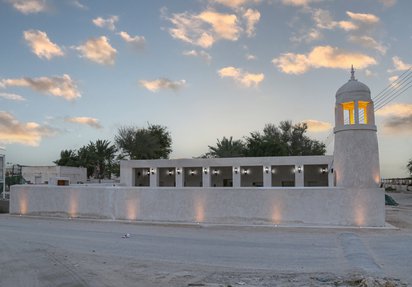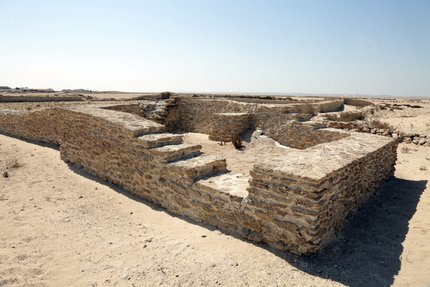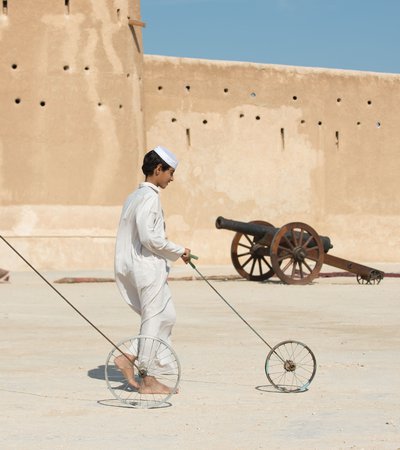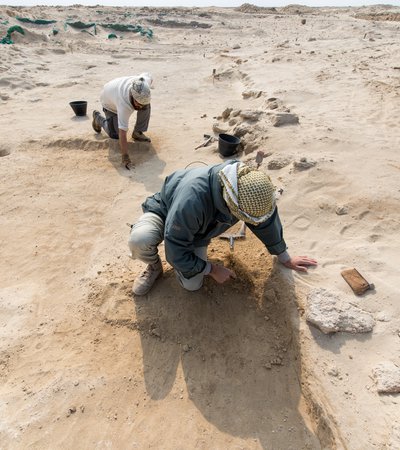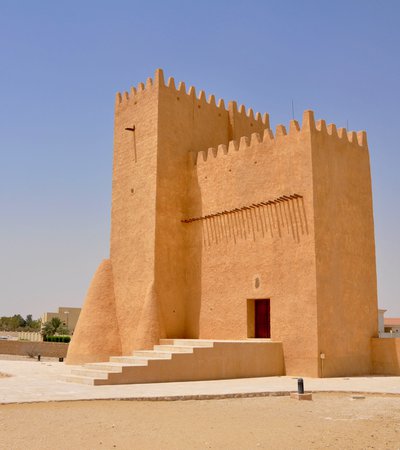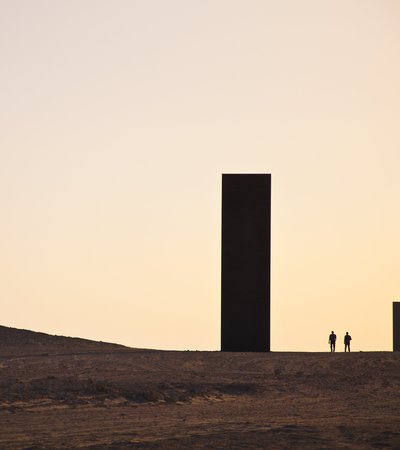Open to Visitors
Saturday–Thursday: 9am–5pm;
Friday: 12.30–5pm
Originally intended for defense purposes, Zekreet Fort was built by tribal leader Rahma bin Jaber Al Jalahmah, entirely of faroush stones, or beach rocks. The fort followed a rectangular plan and towers were added in a later stage to its four corners to further strengthen its structure. Small structures, among which are three madabis (date-pressing rooms), were discovered by archaeologists between the fort and the sea.
Zekreet Mosque includes a courtyard with a cylindrical minaret on top of both the northern and southern walls. The minarets each have a dome mounted on six pillars. The fountain is a relatively modern structure.
The open prayer hall is connected to the courtyard through seven openings. All additions were removed during recent renovations to return the mosque to its original design. Traditional building materials were used for the ceilings and the walls and the original openings were reconstructed.
Public art installation East-West/West-East by Richard Serra is a notable site worth visiting near the fort and mosque.
